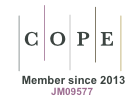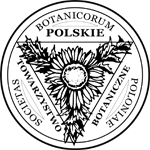Effect of chipping and scoring techniques on bulb production of Lachenalia cultivars
Abstract
Keywords
Full Text:
PDFReferences
Duncan GD. The genus Lachenalia. Kew: Kew Publishing; 2012. (Botanical Magazine Monograph).
Kleynhans R, Hancke FL. Problems and breeding strategies for development of new Lachenalia cultivars. Acta Hortic. 2002;570:233–240. https://doi.org/10.17660/ActaHortic.2002.570.28
Kapczyńska A. Charakterystyka rodzaju Lachenalia. In: Sochacki D, Rabiza-Świder J, Skutnik E, editors. Ozdobne rośliny cebulowe – produkcja i zastosowanie. Warszawa: SGGW; 2018, p. 23–30.
Kleynhans R. Lachenalia spp. In: Anderson NO, editor. Flower breeding and genetics: issues, challenges, and opportunities for the 21st century. Berlin: Springer; 2006. p. 491–516. https://doi.org/10.1007/978-1-4020-4428-1_18
Kapczyńska A. Effect of planting term on growth and flowering of two cultivars of lachenalia produced in a greenhouse as potting plants during winter months. Journal of Horticultural Research. 2014;22:29–34. https://doi.org/10.2478/johr-2014-0003
Suh, JK, Roh, MS, Lee, JS. Leaf cutting propagation, growth and flowering of Lachenalia. Acta Hortic. 1997;430:369–376. https://doi.org/10.17660/ActaHortic.1997.430.57
Ndou AM, Niederwieser JG, Robbertse PJ. Effect of leaf-section position and physiological stage of the donor plant on Lachenalia leaf-cutting performance. S Afr J Plant Soil. 2002;19(4):178–181. https://doi.org/10.1080/02571862.2002.10634461
Bach A, Kapczyńska A, Dziurka K, Dziurka M. Phenolic compounds and carbohydrates in relation to bulb formation in Lachenalia ‘Ronina’ and ‘Rupert’ in vitro cultures under different lighting environments. Sci Hortic. 2015;188:23–29. https://doi.org/10.1016/j.scienta.2015.02.038
Salachna P, Zawadzińska A, Wilas J. The use of natural polysaccharides in Eucomis autumnalis propagation by twin-scale cuttings. Acta Hortic. 2015;1104:225–228. https://doi.org/10.17660/ActaHortic.2015.1104.34
Aksu E, Çelikel FG. The effect of initial bulb size on snowdrop (Galanthus elwesii Hook. f.) bulb propagation by chipping. Acta Hortic. 2003;598:69–71. https://doi.org/10.17660/ActaHortic.2003.598.9
Yanagawa, T. Propagation of bulbous ornamentals by simple cultures of bulb-scale segments using plastic vessels. Acta Hortic. 2005;673:343–348. https://doi.org/10.17660/ActaHortic.2005.673.43
Hanks GR. Factors affecting yields of adventitious bulbils during propagation of Narcissus by the twin-scaling technique. J Hortic Sci. 1985;60(4):531–543. https://doi.org/10.1080/14620316.1985.11515661
Rees AR. Ornamental bulbs, corms and tubers. Wallingford: CAB International; 1992.
Knippels PJM. Advanced in vivo propagation techniques for specialty bulbs. Floriculture and Ornamental Biotechnology. 2012;6:154–157.
Kariuki W. Rapid multiplication of Ornithogalum saundersiae Bak. through bulblet production in vivo. Acta Hortic. 2008;766:135–142. https://doi.org/10.17660/ActaHortic.2008.766.16
Mori G, Hirai H, Imanishi H. Vegetative propagation of Nerine bulbs by cross-cutting. Acta Hortic. 1997;430:377–382. https://doi.org/10.17660/ActaHortic.1997.430.58
Mofokeng MM, Kleynhans R, Sediane LM, Morey L, Araya HT. Propagation of Hypoxis hemerocallidea by inducing corm buds. S Afr J Plant Soil. 2018;35(55):359–365. https://doi.org/10.1080/02571862.2018.1443350
Knippels PJM. Propagation of specialty bulbs. Herbertia. 2000;55:64–73.
Solgi M, Dastyari K, Hadavi E. The evaluation effects of some vegetative propagation methods and plant growth regulators on bulblet production rate in crown imperial (Fritillaria imperialis L.). Journal of Horticulture, Forestry and Biotechnology. 2015;19(1):1–6.
Zhu Y, Liu KS, Yiu JC. Effect of cutting method on bulb production of Hippeastrum hybridum in Taiwan. Acta Hortic. 2005;673;531–535. https://doi.org/10.17660/ActaHortic.2005.673.71
Seyidoglu N, Zencirkiran M. Vegetative propagation of Sternbergia lutea (L.) Ker-Gawl. Ex Sprengel (winter daffodil) by chipping techniques. J Biol Sci. 2008;8(5):966–969. https://doi.org/10.3923/jbs.2008.966.969
de Hertogh A, Le Nard M. Tulipa. In: de Hertogh A, Le Nard M, editors. The physiology of flower bulbs. Amsterdam: Elsevier; 1993. p. 617–682.
DOI: https://doi.org/10.5586/aa.1760
|
|
|






